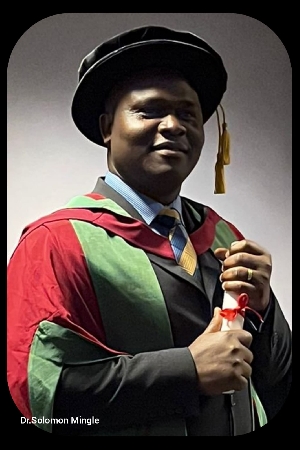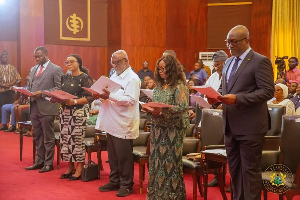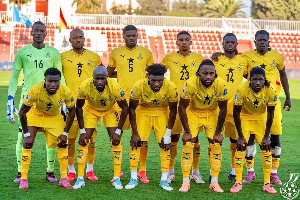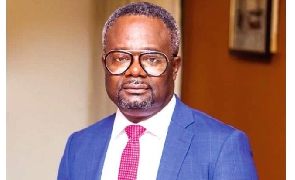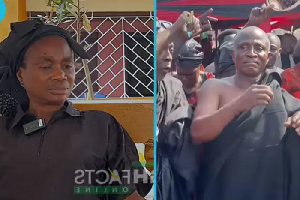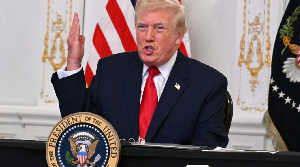We at writersghana.com continue to learn and understand more about the Leaky Wave Antennas developed by Dr Solomon Mingle, a scholar of Ghanaian origin, who does research at the University of Birmingham in the UK.
In this article, we bring you part one of the transcript of an interview Dr Mingle granted to Isaac Ato Mensah, the founder of Writers & Shakespeares Ghana Limited (writersghana.com).
Writersghana/Ato Mensah: Good morning Dr. Mingle and welcome to writerghana.com. What inspired you to go into Leaky Wave Antennas?
Dr Solomon Mingle: Basically, I’m driven to pursue a career in Leaky Wave Antennas for several reasons. Firstly, I’m fascinated by electromagnetic waves propagation and their applications.
Secondly I’m also passionate about contributing to cutting edge technology in communication systems.
Lastly, I must say I see it as an opportunity to address real world challenges in fields such as healthcare, security and telecommunications through innovative antenna designs.
Writersghana/Ato Mensah: You used such a simple thing as copper wires; the copper wires we have on our rubbish dumps in Ghana.
At Agbogbloshie, for example, a polluted place and the Korle Lagoon, easily the most polluted water body in Ghana, the copper wires abound.
That is to say, some of the material you used is right within our reach.
Can anybody, let’s say, from your alma mater Accra Polytechnic, now Accra Technical University, digging up copper wires, follow your procedure and generate the same Leaky Wave frequency?
If yes, will they reach the same 87% efficiency you reached?
Dr Solomon Mingle: Well, my answer to this is that while it is true that the materials I used in my research contain some copper wires that can be found in places such as Agbogbloshie and Korle Lagoon, the process of generating this same Leaky Wave frequency with the same efficiency involves more than just obtaining the raw material.
This is because the efficiency of these processes depend on various factors which include design fabrication techniques and expertise.
Having said that, someone from Accra Polytechnic who wants to follow a similar procedure using copper wires and achieve the same level of efficiency may more likely require a deep understanding of the intricate technical aspects which are involved as well as access to specialised equipment, you know.
Also, knowledge in the field of electromagnetic waves propagation and antenna designs.
So there is more to it than what you see.
Writersghana/Ato Mensah: How easy or difficult is it to replicate your findings? Dr Solomon Mingle: Well, replicating my findings can vary in different circumstances and it will be difficult depending on several factors such as the complexity of the research, the availability of the resources and equipment and the level of expertise required in this specific field.
You must also know that in some cases if the research involves straightforward procedure and widely available material, then replicating and finding the same results might be relatively easier.
However, it is not so.
This research involves advanced techniques, specialised equipment, as well as intricate methodologies which are really, really academic.
Therefore, application could be a bit of a struggle for any ordinary person who hasn’t had the skills and knowledge to gain this.
Therefore, there will be some challenges in that regard.
Additionally I can also say that certain factors such as clarity and comprehensiveness of my research documentation can also influence the ease of replication.
Writersghana/Ato Mensah: We presume this research on Leaky Wave antennas forms part of your PhD.
But in your journal article titled “Quantum Leaky-Wave Antenna Based on Dielectric Image Line for Remote Vital Sign Detection at mm-Wave Frequencies”, you have two Greek scholars Despoina Kampouridou and Alexandros Feresidis, working with you.
So is it a collaborative work between you and those two Greek professors who are members of the Institute of Electrical and Electronic Engineers, or is it your singular work?
To clarify, we presume that this is a small aspect of your PhD thesis. So at which point did you collaborate with these scholars for this paper to be published?
Dr Solomon Mingle: This research on Leaky Wave Antennas indeed formed part of my PhD thesis.
But the collaboration with the two Greek scholars was because they are already in the field and are pursuing different routes so basically these people are more into electrical and electronics engineering.
And they are gurus in this field so it’s always good we learn from the gurus and then decide what you want to do.
Furthermore, while the overall thesis was primarily my own work, the write-up, the design, the experimentation, everything was done solely by me.
I simply collaborated with them to seek their ideas and also know I’m in the right frame of league with them.
At certain stages some of them also enhanced the scope of my work and research. So whilst their expertise and insight contributed significantly to my development of the research paper and the journal articles which I wrote, everything else was solely done by me.
Therefore, while the journal article reflects collaborative effort, it remains a component of my broader PhD research showcasing a collective effort on an aspect of my doctoral thesis.
Writersghana/Ato Mensah: You seem to focus on remote vital signs monitoring. We want to know whether beyond the health sector you have other applications of this same technology and who you are working with in terms of patenting rights? Dr Solomon Mingle: While remote vital signs monitoring is indeed a primary focus of my research, the application of this technology extends beyond the health sector.
Leaky Wave Antennas, as you already know, have potential applications in various fields including telecommunications, security systems, environment-friendly situations and many more.
It can also be used at the airport as well.
In terms of patent, I am into collaboration at the moment and we are in the third stage of the patent process.
I’m currently working closely with my research institution’s technology transfer officer and a legal expert to explore the possibility of completing the patent aspect of this research.
Additionally, I’m also collaborating with industry partners and stakeholders to further explore commercialisation of these potential technologies with them.
Writersghana/Ato Mensah: Are there any collaborations to help put this on a bigger industrial scale for commercial use?
Dr Solomon Mingle: Yes; the answer is yes.
There are collaborations underway to scale up the implementation of this Leaky Wave Antenna technology for commercial use.
I’m actively engaged in partnership with industrial stakeholders the National Health Service, that is, the NHS here [in the UK].
They’ve had trials using my prototypes and very soon I’ll be getting feedback on the results which have been established so far.
Another company which I’m also engaging with deals with telecommunications and my Leaky Wave Antenna is being used over there also.
So this collaboration really involves joint research development efforts as well as discussions around licensing agreements and technology transfer.
By working together with these partners, I aim to accelerate the adaptation of the Leaky Wave Antenna technology on a larger industrial scale and ultimately bring its benefits to a wider audience.
Writersghana/Ato Mensah: You mentioned your prototype in the journal article. How many prototypes have you made of this same antenna?
If any others, with those other ones were you able to achieve the same 87% frequency efficiency or higher; or how difficult was it to reach the same bandwidth efficiency?
In other words, if someone were to replicate your antenna, how easy or difficult is it to reach the same efficiency you reached?
Dr Solomon Mingle: In the development of this antenna technology, I have indeed created multiple prototypes to refine and validate the design.
Each iteration aims to improve upon the previous version, incorporating insight gained from testing and analysis while achieving the same 87 per cent frequency efficiency or even higher.
Subsequent prototypes were always a challenge.
The subsequent prototypes also provided valuable insight into the optimisation of the design parameters and manufacturing processes as well.
All told, replicating the antenna and reaching a similar level of efficiency may require careful attention to detail, precision, calibration and a bit of expertise in antenna design and fabrication.
However, I must say that with thorough documentation of the design specifications and methodologies along with proper guidance, it is feasible for others to replicate and potentially enhance the efficiency of this antenna.
[End of part one. You may reach Dr Solomon Mingle through solomonmingle@gmail.com].
Opinions of Tuesday, 9 April 2024
Columnist: Isaac Ato Mensah

